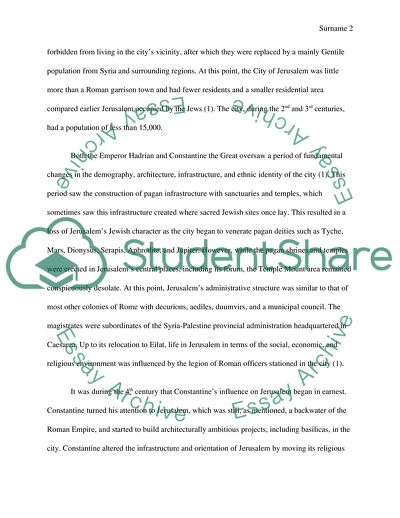Cite this document
(Christianization of Jerusalem Essay Example | Topics and Well Written Essays - 1500 words, n.d.)
Christianization of Jerusalem Essay Example | Topics and Well Written Essays - 1500 words. https://studentshare.org/religion-and-theology/1832482-constantine-and-the-christianization-of-jerusalem-how-a-pagan-military-colony-became-the-holiest-place-of-christendom
Christianization of Jerusalem Essay Example | Topics and Well Written Essays - 1500 words. https://studentshare.org/religion-and-theology/1832482-constantine-and-the-christianization-of-jerusalem-how-a-pagan-military-colony-became-the-holiest-place-of-christendom
(Christianization of Jerusalem Essay Example | Topics and Well Written Essays - 1500 Words)
Christianization of Jerusalem Essay Example | Topics and Well Written Essays - 1500 Words. https://studentshare.org/religion-and-theology/1832482-constantine-and-the-christianization-of-jerusalem-how-a-pagan-military-colony-became-the-holiest-place-of-christendom.
Christianization of Jerusalem Essay Example | Topics and Well Written Essays - 1500 Words. https://studentshare.org/religion-and-theology/1832482-constantine-and-the-christianization-of-jerusalem-how-a-pagan-military-colony-became-the-holiest-place-of-christendom.
“Christianization of Jerusalem Essay Example | Topics and Well Written Essays - 1500 Words”. https://studentshare.org/religion-and-theology/1832482-constantine-and-the-christianization-of-jerusalem-how-a-pagan-military-colony-became-the-holiest-place-of-christendom.


